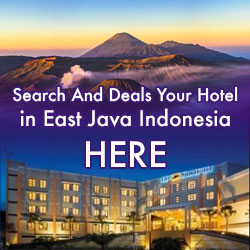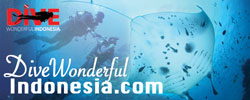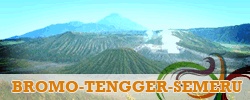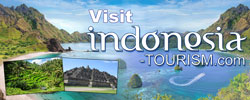Tourism Destinatons
About Lamongan Regency
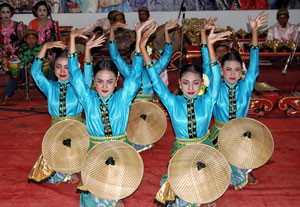
Lamongan regency is one of the strategically located regencies for the investment of industry, tourism, housing and commerce because it becomes the supporting district of Metropolitan city of Surabaya or more widely known as Surabaya Metropolitan Area (SMA). In term of territorial cooperation, Lamongan regency belongs to Satuan Wilayah Pembangunan (SWP) of GERBANGKERTOSUSILA, a district development unit covering the regency of Gresik, Bangkalan, Mojokerto, Sumenep, Sidoarjo and Lamongan.
Lamongan people possess the high spirit of togetherness
and work ethic. Furthermore, they are open, willing to
sacrifice for the sake of public, having high tolerance
and consistently keeping harmonious and peaceful life.
Business opportunities in Lamongan regency are getting
more widely open, supported with the potency of the conducive
of internal politic environment. The improving growth
of tolerance and the spirit of togetherness to actively
participate in region development among the government
executives with the local parliaments, political parties,
social organizations, non-government organizations, and
all elements of society have positive influence towards
the growth of economic development.
The conducive of the condition is also proved by realization
of Local general election to choose the regent and vice
regent, which could be carried out safely, orderly and
peacefully with people’s good political participation.
The name of Lamongan regency is growing more marketable
by existence of the lane for transportation and communication
with outside world, such as the availability of infrastructure
and modern telecommunication devices in remote areas,
the widening of Surabaya-Babat road and Deandels Route
in Pantura (north coast), the opening commuter train lane
of Pasar turi – Babat, the building of inter island
Sea Port (ASDP – port for transportation and crossing)
and special port for logistic of oil and gas industry
in Paciran Shore-Base.
The presence of great-capital banks in Lamongan such as
Mandiri Bank, BNI’46, Bank Central Asia (BCA), BRI,
Bank Jatim and many institutions in retail banking which
give services to remotes villages and is easily accessed
for the finance of traditional economy. The retailed bankings
area, among others, BPR Bank Pasar Pemda (local government
– owned Bank), BPR Unit Desa, and many other financial
institutions either managed by the cooperatives or business
units of offices. They play a great role for sufficing
the business capitals and financing the development activities.
GEOGRAPHICALLY
Geographically, Lamongan is located in 6051’54’’
to 7023’6’’ of south Longitude and 11204’41’’
to 112035’45’’ of east Latitude. The
regions of Regency Lamongan also separated with the other
regency are:
-Northern side: Java Sea
-Southern side: Regency of Mojokerto and Jombang
-Eastern side: Gresik Regency
-Western side: Regency of Tuban and Bojonegoro
TOPOGRAPHY
The district area covers 1,812,8 km2. 47,71% of the district,
or around 84,672 hectares, are farming land. The rest
is the marginal area, which is suitable for industrial
and housing area, particularly, in Pantura (north coast)
and southern part of Lamongan.
DEMOGRAPHY
In 2003, the population reached 1,244,812 people with
average density of 676 people/km2. About 99.63% of the
population is Moslem. Most of them are Java tribe that
commonly live in villages and make a living as farmers
or farm- workers. Due to the hard natural challenge in
the past, and supported by its vicinity to Surabaya, it
encourages the farming of persevering native-traders (food
trading, small industry, craft industry or social service).
GOVERNMENT ADMINISTRATION AREA
On governmental administrative side, Lamongan regency
consists of 27 districts, 12 sub-districts and 462 villages.
GEOLOGY
The land utility of this region covers agricultural farming
land area 806.09 km2 (44.63 %), 328.04 km2 (18.10 %) dry
field area, 318.4 km2 (17.57 %) forest area, 142 km2 (7.84
%) housing and its facilities area, and for other interests
which cover 214.99 km2 (11.86 %).
THE LAND AREA CONDITION
The region has separated by Bengawan Solo River into two
parts with its total length about 65 km. So the condition
of the land surface areas are varied according to its
levels, where it is more than a half of the region (50.17
%) occupies the area of 0 - 25 m above the sea level and
the rest of it occupies 25 - 100 m (45.68 m) and 100 m
above the sea (4.15 %).
The land area of this region can be classified according
to its characteristics such as:
• The middle south part which is considered as relatively
a fertile area
• The south and north part which occupy mountainous
and rocky areas and considerably have medium to low fertility
level
• The middle north area, which covers the flood-stricken
and swamp areas
THE POTENCY OF LAMONGAN
The resident of Regency Lamongan have big enough potency,
goodness evaluated from facet of resource shake hand and
also human resource. The economics of resident of regency
Lamongan is a lot of supported from agriculture area,
fishery and commerce, especially home industry as the
first product from Regency Lamongan. To increase quality
and quantity value of home industry product and the handicraft,
on duty of commerce and cooperative of Lamongan Regency
perform construction to handicraft people and assist in
the case of its marketing by carrying out exhibitions
in local and domestic country. Besides government of Lamongan
Regency also found building for the place promote and
sell production of Lamongan Entrepreneur in the 2003 years
old
This showroom stands up above land for the width of 45 X 70 meter by owning building for the width of 18 X 22 meter, which in its column showed all kinds of product from 23 handicraft people. At present, the number of small industry in Lamongan, either formal or non-formal ones, reaches 23,843 units. It absorbs 63,762 employees. The investment value reaches 41,503,182,000,00 rupiahs with the selling product value of 103,449,400,00 rupiahs. Such potency is mostly in the field of food and beverages, clothing and leather, chemical and building materials, craft and gold. Meanwhile, the middle and big scale industries reach 315 business units, absorbing 6,622 emplyees with the investment value of 39,888,782,000,00 rupiahs.
Among those small industries and people’s crafts, some products have exported to the markets of Korea, Belgium, Australia, and Germany. They are wooden craft, earthen ware craft, bamboo-plaited craft, bicycle-saddle craft, bag craft made of Enceng Gondok (water hyacinth) in Lamongan and Mantup subdistricts, small industry center of ATBM bounded weaving in Parengan Maduran, hand written batik craft, embroidery, and gold craft in Sendang Agung and Sendang Dhuwur Paciran.
The home industry of sport clothing and jackets has also
rapidly developed in Tritunggal village, Babat sub-regency,
supplying the commerce need in Pasar Turi market, Kembang
Jepun market and Klewer market. It also completes the
need of school uniforms in some regions of East Java and
Kalimantan Province.
In addition, various kinds of people’s crafts also
grow and expand in villages such as bos kopyah (Moslem
caps), plastic plaited shopping bags, bamboo plaited craft,
salted fish, soy sauce, red bricks, earthenware vessels,
and food products of jenang and wingko babat which have
been well-known throughout the region.
Beside its crafts, Lamongan regency also has the production of fish which reaches more than 71,578 tons every year: 39,934 tons from sea- capturing result, 29,590 tons from the result of fishery farm cultivation and 2,054 tons from common waters. The manpower workers absorbed consist of 37,826 fishery farmers and the rest are fishermen. It is a great blessing that Lamongan regency has sea richness with its 47 km beach, covering 17 coastal villages, from Lohgung village in Brondong district to Weru Lor village in Paciran district. This natural condition provides an alternative choice for the coastal society to work in fishery sector. There are 23,186 fishermen, 435 fish cultivators, 49 hatcery entrepreneurs, one cold storage unit and 7 units of ice factory (supplying fishermen’s need). The available boats are more than 15.000 units and all of them are machine generated. Meanwhile, the catching apparatus are 271 purse seins, 686 large nets, 2,360 fishing praws, 3,574 small nets 795 gill nets, 595 tromel nets and 233 other tools.
The well-known catching results are laying fish, kuning fish, tongkol, tengiri, kakap merah, rajungan, dorang, and cumi-cumi. The marketing covers East Java and Yogyakarata. Even, through the cold storage company in Paciran, the products are exported to the markets of China, Taiwan, Japan, Europe and United States of America. Due to the development of fishery farms, the people’s economy increases drastically since the agricultural structure in Lamongan, which harvested only once a year in the past, becomes productive all seasons of year.
The area of Bengawan Jero (inner swamp), which used to
be well known as flooding area for 2-3 months in a year
and lacking water area in dry season, is now becoming
a centre of land fishery. People’s economy in this
region develops most rapidly and influences the economic
growth in the surrounding area.
The income per capita is 7,965,450.00 rupiahs for fishery
farmers and 2,496,040.00 rupiahs for sea fishermen. Whereas,
the average people’s income per capita of Lamongan
regency is only 1,032,527.00 rupiahs. The success of fishery
farmers is proved by the number of pilgrimage to Meca
from this area, which is always the greatest in Lamongan
regency, reaching more or less 1,500 persons every year.
Lamongan regency is really rich of potencies in its area.
Traditionally, clothing products has been developed in
Lamongan. They are; the production of Sarong and bound
weaving in Parengan, Maduran district; Batik in Sendangagung
and Sendangdhuwur village, Paciran district; embroidery
which spreads out in Sendangagung and Sendang Dhuwur,
Tunggul and Paciran district village, Banjarmadu Karanggeneng
district, and the others district.
Industry of Kopyah (Moslem caps) grows well in villages
of Putatkumpul and Pomahanjangan (Turi district), Bojoasri
and Pengangsalan (Kalitengah district), and Meluwur (Glagah
district). Then industry of carpet exists in Jatirejo
and Jotosanor village, Turi district and Sidoharjo, Lamongan
district. Whereas the industry of bags made of Enceng
Gondok (a kind of water hyacinth) grows rapidly in Pengumbulanadi
village, Tikung district and Sidoharjo, Lamongan district.
Convection home industry is also of good development in Tritunggal village (Babat district). It produces various kinds of T-shirt, sport costumes, jackets, tablecloths, pajamas, and school uniforms. The marketing has covered the area of the area of East Java, Solo, Jogjakarta, Bali and Kalimantan. This potency of Tritunggal village is then developed into an area of prospective convection industrial centre and it is getting more prospective because of its strategic location on the sides of Surabaya – Babat – Jakarta road.

Wingo, Lamongan’s Sweet Cake
Wingko Wingko is one of Indonesia traditional foods. People recognize this food as Wingko Babat from Semarang, Central Java. Whereas, Babat is a small town in Lamongan Regency, East Java. And it is true; this food is particularly Lamongan traditional food. Wingko is a typical of cake which made by coconut and sticky rice. It taste sweet and savoury at the same time, and having chewy texture in every bite. It mostly having round shape or in small round flips. The taste of savory from the coconut milk that blend…
The Caping Dance
Caping Dance Caping Ngancak Dance Caping Ngancak dance is one of traditional dances in Lamongan regency. The dance is describes about farmers in their rice field showing the process from grow the rice until they get harvest. Like farmers, the dancers also wearing ‘Caping’, which is a special hat that only wore by farmer in Indonesia. This dance is performed by group of young females who wore village costumes in modern style and bring Caping as the main property. www.EastJava.com
Chicken Soto Lamongan
Soto Lamongan This food is one of the famous foods in entire Indonesia. Soto, is such a beef or chicken soup. In some regency in East Java or even in Indonesia have their own type of soto. The most famous one is coming from Lamongan. Soto Lamongan have rich ingredients that mix together into a bowl completed by hot spicy broth. The condiments are: rice, glass noodle, chicken shredded, chicken liver, young egg, boil shredded egg, fried onion and celery. Do not forget the sambal sauce to make it hotter…
Wingko Babat
Wingko Wingko is one of Indonesia traditional foods. People recognize this food as Wingko Babat from Semarang, Central Java. Whereas, Babat is a small town in Lamongan Regency, East Java. And it is true; this food is particularly Lamongan traditional food. Wingko is cake made by coconut and sticky rice. It taste sweet and savoury at the same time, and having chewy texture in every bite. It mostly having round shape or in small round flips. It sweet everyone… www.eastjava.com



